There are two types of core strengthening, with dynamic core strengthening being the most well known. Besides being an excellent way to work your deep muscles and teach you the basics you need to maintain a healthy everyday posture and better balance, it’s a smart idea to step up your core strengthening once you’ve mastered it. This will save you time and give you exercises that target specific areas, making core strengthening more fun and effective. Read on to find out all the perks of dynamic core strengthening!
Whereas static core strengthening involves holding a position as you keep your body perfectly still, dynamic core strengthening involves movement. It’s just another way to improve your mobility and joint stability, in addition to stabilization endurance.
Your deep muscles are what initiate every movement your body makes. They’re what bind your upper and lower body and play a key role in your mobility, the distribution of strength in your arms and legs and your overall stability that you need in order to maintain a healthy posture. Static core strengthening works three areas of that affect your posture: your abs, back and posterior muscles.
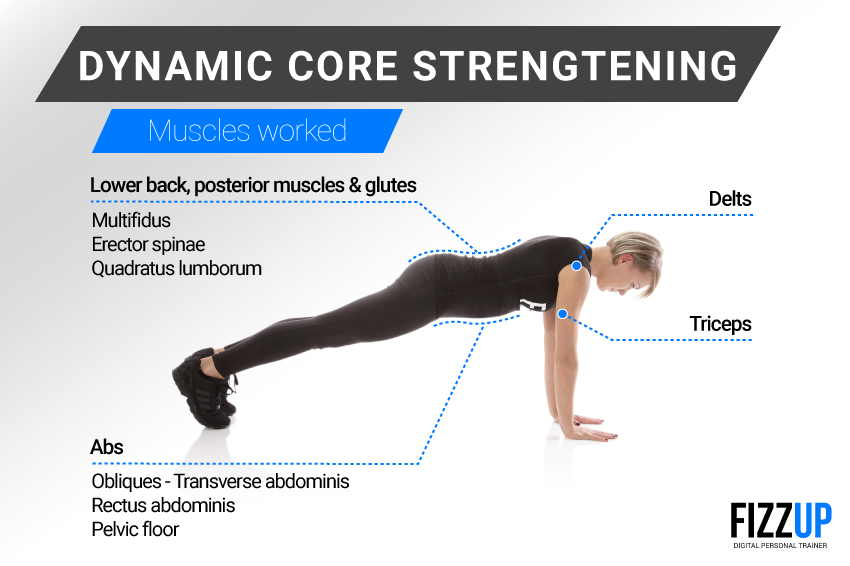
Dynamic core strengthening works the same muscle groups and contributes to the healthy development of your deep muscles, while offering more variations. You’ll work these areas at the same time or one after the other and easily be able to change the difficulty of the exercise. The movements they require you to do and the demand on your muscles is very similar to what you might experience in your daily routine or during a physical activity, which makes dynamic core strengthening exercises more interchangeable and practical in everyday life.
While doing a dynamic core strengthening exercise, you’ll mainly target your deep muscles: abs, lower back and lats. Some exercises also strengthen other muscle groups such as your glutes, delts and triceps, depending on the movement you’re doing.
Abs: All your abdominal muscles come into play, such as your internal and external obliques, rectus abdominis, transverse abdominis and pelvic floor.
Lower back and posterior muscles: These are the muscles that are located along your spine, such as your multifidus, erector spinae and quadratus lumborum.
Whenever you do an exercise to strengthen your core, be it static or dynamic, always make sure to keep your head, spine and hips perfectly aligned. With its wide range of variations and unlimited number of possibilities, dynamic core strengthening is great for making progress at your own pace, having fun while developing your deep muscles and reaching and maintaining your goals.
Side plank hip dips: This exercise is perfect for effectively strengthening your external and internal obliques. Get in the elbow side plank position, then lift and lower your hips.
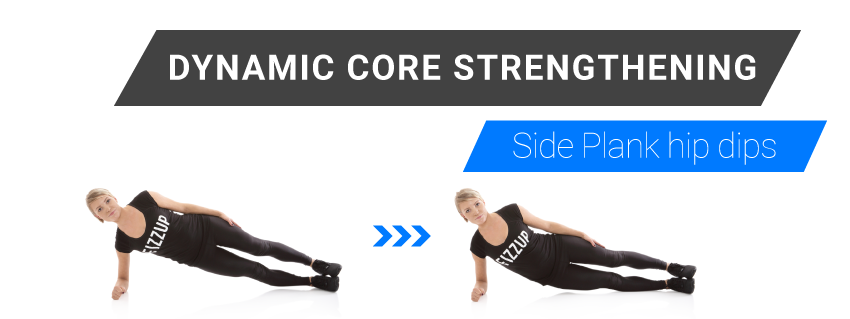
Plank with thigh touches: Get into the elbow plank position. Hold this position and touch your thigh with your hand as you switch sides. Trying to balance on three points as you move makes this exercise significantly effective in terms of stabilization.
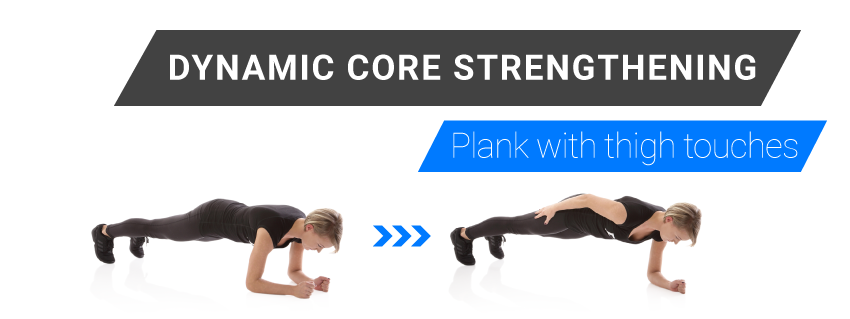
Plank with leg raises: The idea is the same as for the previous exercise, but this time, you need to raise one leg after the other. It does just as much for your stability as it works your glutes and hamstrings significantly more.
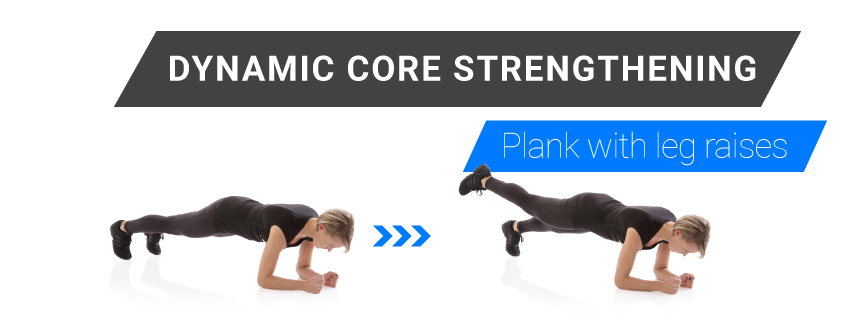
Plank rotations: In the push-up position, your arms should be straight and shoulder-width apart. Rotate your bust by lifting your arm. Stop once both arms form a straight line and your body forms the shape of a “T”. Then, return to the starting position and repeat the exercise by doing the same movement on the other side of your body.
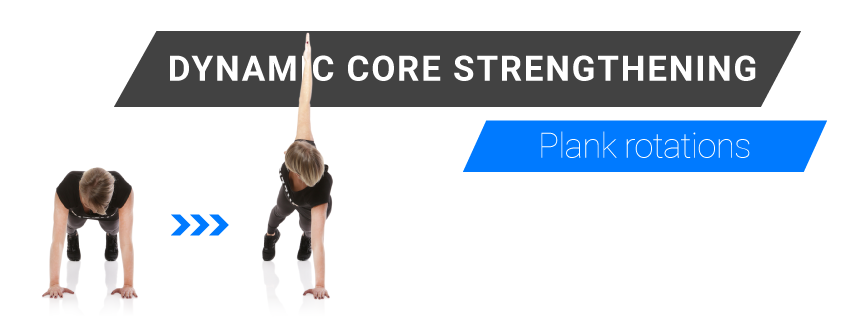
Mountain climbers: This cardio exercise can also be an excellent way to strengthen your core when you do it slowly. In the push-up position, bring one knee after the other to your chest. Besides strengthening your lower back and abdominal wall, it’s great for improving hip mobility.
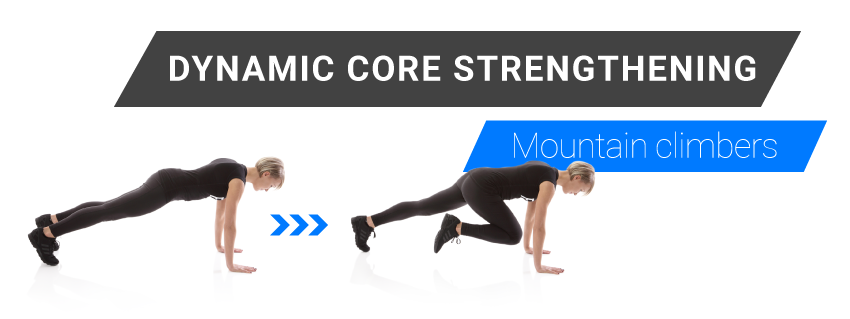
The kinetic chain is a concept borrowed from engineering that describes how your entire body is interconnected to create movement. When you do a workout that includes dynamic core strengthening, your nerves, muscles and joints work together for best performance. You’ll learn how to better use your body and reduce the risk of muscle imbalance or lesions.
When you start with static core strengthening and then turn it up a notch with dynamic core strengthening, you’ll learn how to develop and balance all the muscles in your body. Your inner and outer deep muscle chains work in harmony and create a toned kinetic chain, which improves your athletic performance. Not only will you improve your mobility, balance, coordination, joint flexibility, but also your strength.
By working your deep muscles, dynamic core strengthening also enables you to reach your aesthetic goals. When you make core strengthening part of your regular physical activity and combine it with cardio and/or strength training exercises, you’ll get a flat stomach in a record time as well as an evenly sculpted and muscular body.
Now you’re an expert in all the variations of core strengthening and know how to effectively sculpt and slim down your physique. What’s your favorite dynamic core strengthening exercise?
Join the 7 million users already registered on FizzUp
Join us